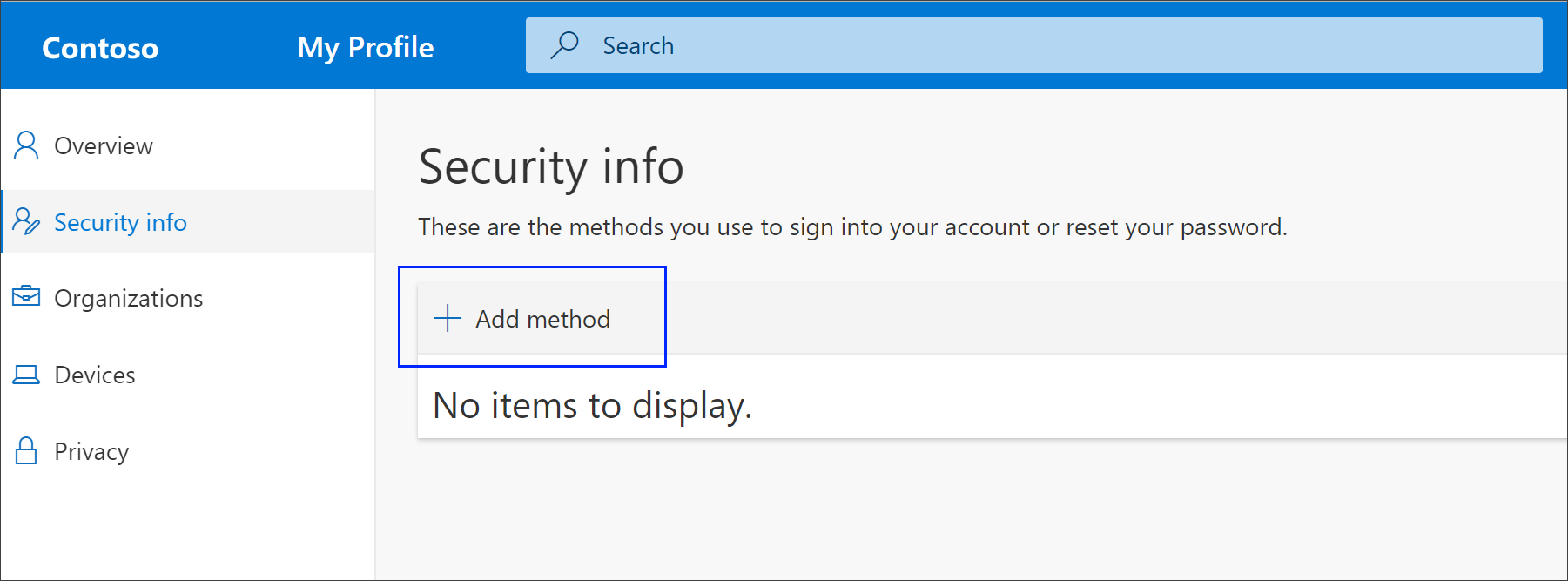
2. On the Add a method page, select Authenticator app from the list, and then select Add.On your phone or tablet, download and install the Microsoft Authenticator app for Android, iOS or Windows Phone.
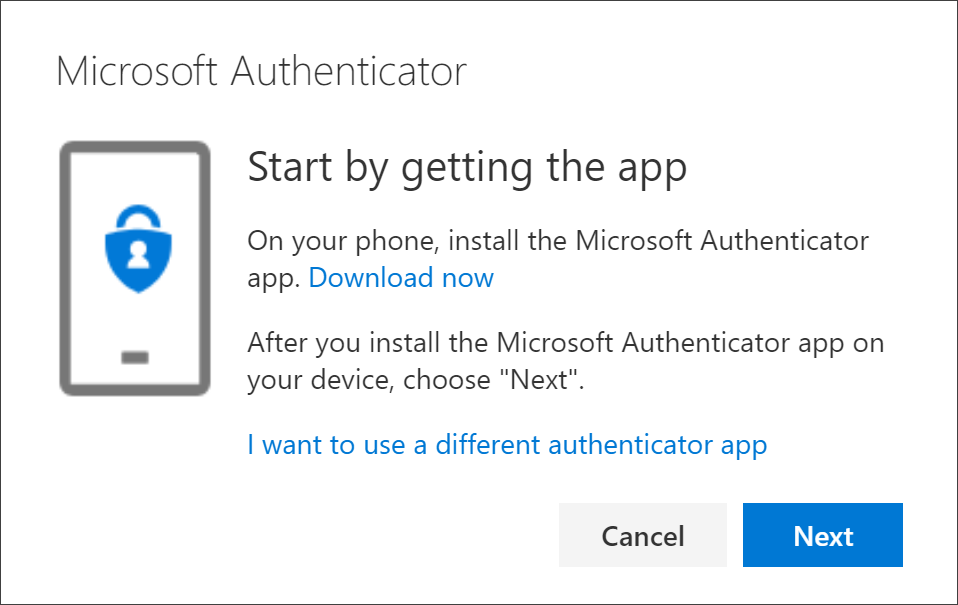
3. Remain on the Set up your account page while you set up the Microsoft Authenticator app on your mobile device.
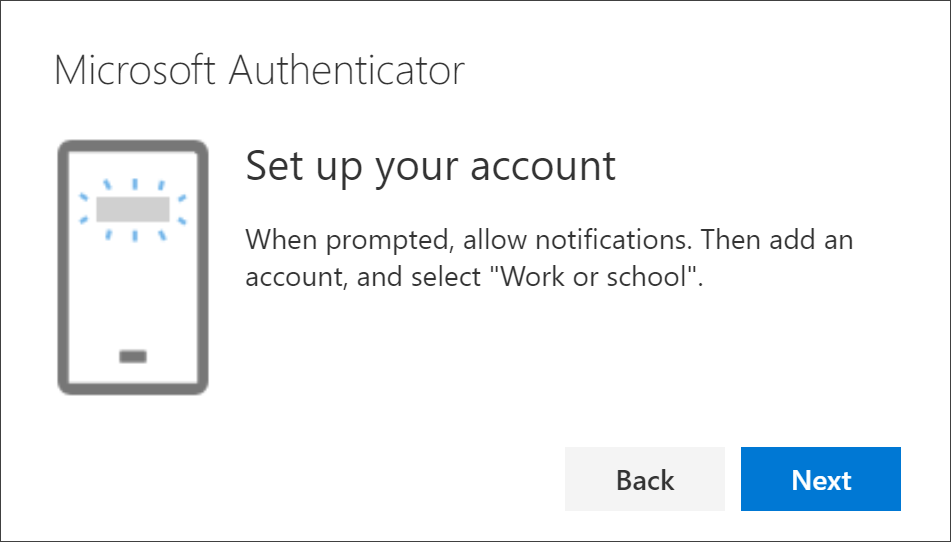
4. Open the Microsoft Authenticator app, select to allow notifications (if prompted), select Add account from the Customize and control icon on the upper-right, and then select Work or school account.
Note: The first time you set up the Microsoft Authenticator app, you might receive a prompt asking whether to allow the app to access your camera (iOS) or to allow the app to take pictures and record video (Android). You must select Allow so the authenticator app can access your camera to take a picture of the QR code in the next step. If you don’t allow the camera, you can still set up the authenticator app, but you’ll need to add the code information manually. For information about how to add the code manually, see see Manually add an account to the app.
5. Return to the Set up your account page on your computer, and then select Next. The Scan the QR code page appears.
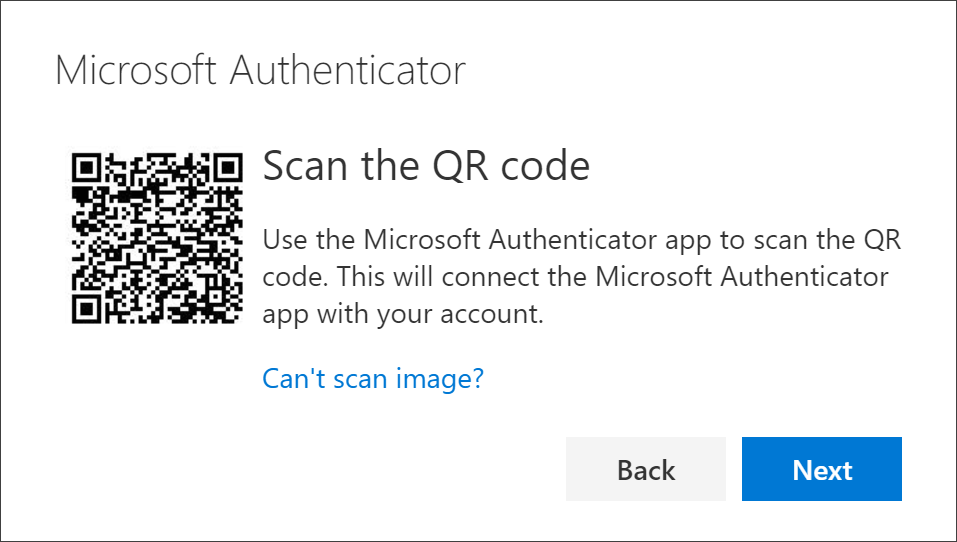
6. Scan the provided code with the Microsoft Authenticator app QR code reader, which appeared on your mobile device after you created your work or school account in Step 6.
7. The authenticator app should successfully add your work or school account without requiring any additional information from you. However, if the QR code reader can’t read the code, you can select Can’t scan the QR code and manually enter the code and URL into the Microsoft Authenticator app. For more information about manually adding a code, see Manually add an account to the app.
8. Select Next on the Scan the QR code page on your computer. A notification is sent to the Microsoft Authenticator app on your mobile device, to test your account.
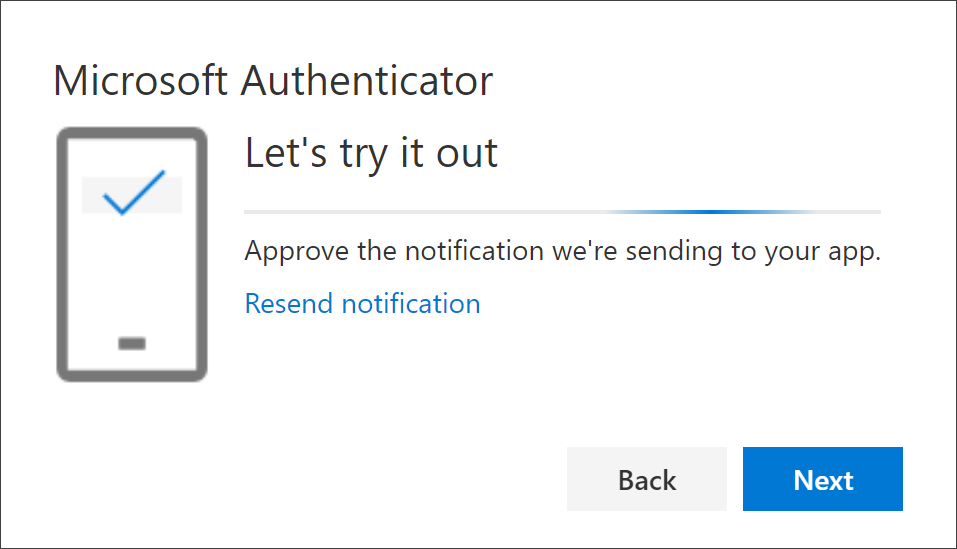
9. Approve the notification in the Microsoft Authenticator app, and then select Next. Your security info is updated to use the Microsoft Authenticator app by default to verify your identity when using two-step verification or password reset.

If you want the authenticator app to be the default method used when you sign-in to your work or school account using two-factor verification or for password reset requests, you can set it from the Security info page.
Note: If your default sign-in method is a text or call to your phone number, then the SMS code or voice call is sent automatically during multifactor authentication. As of June 2021, some apps will ask users to choose Text or Call first. This option prevents sending too many security codes for different apps. If your default sign-in method is the Microsoft Authenticator app (which Microsoft recommends), then the app notification is sent automatically.
1. On the Security info page, select Change next to the Default sign-in method information.
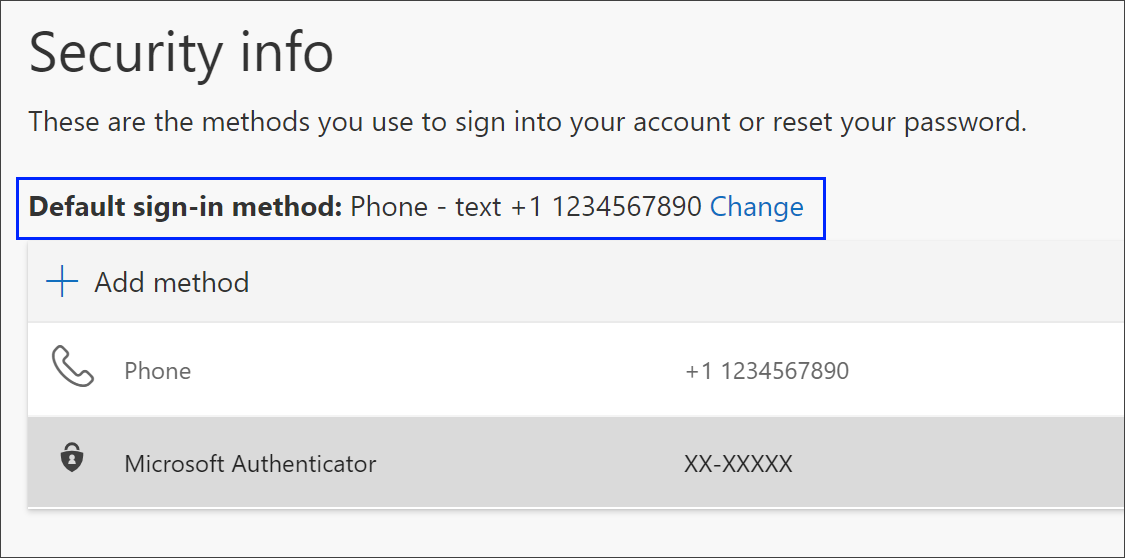
2. Choose Microsoft Authenticator – notification from the list of available methods. If you’re not using the Microsoft Authenticator app, select the Authenticator app or hardware token option.
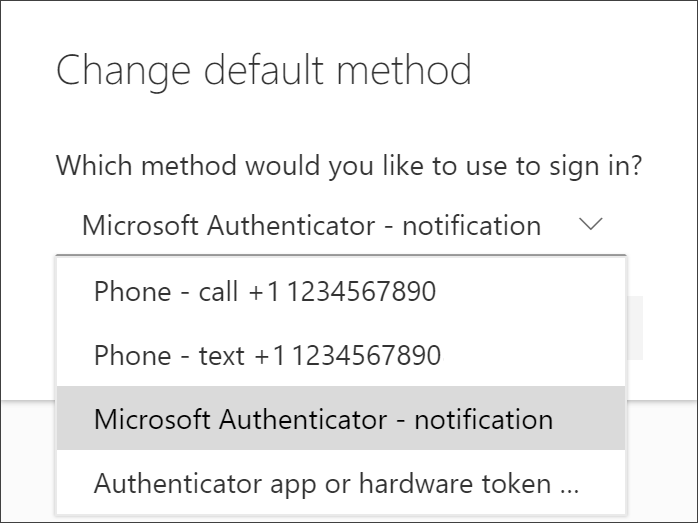
3. Select Confirm. The default method used for sign-in changes to the Microsoft Authenticator app.
You have additional options for how your organization contacts you to verify your identity, based on what’s you’re trying to do. The options include:
Note: If some of these options are missing, it’s most likely because your organization doesn’t allow those methods. If this is the case, you’ll need to choose an available method or contact your administrator for more help.